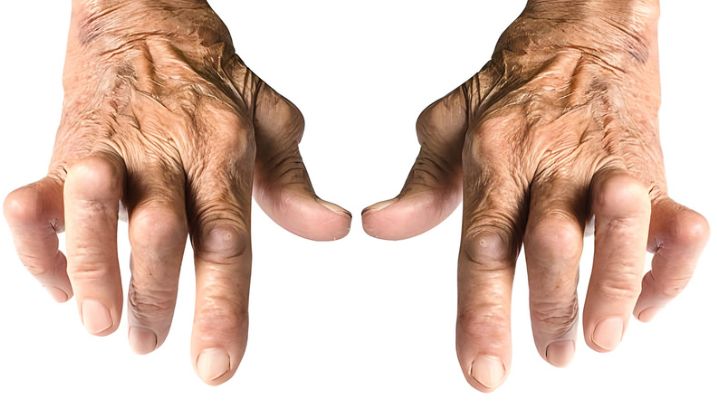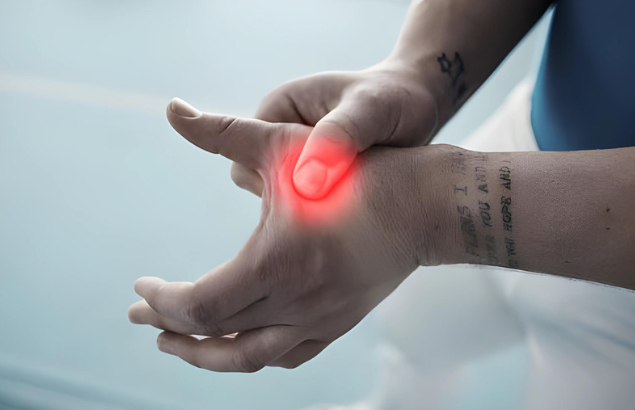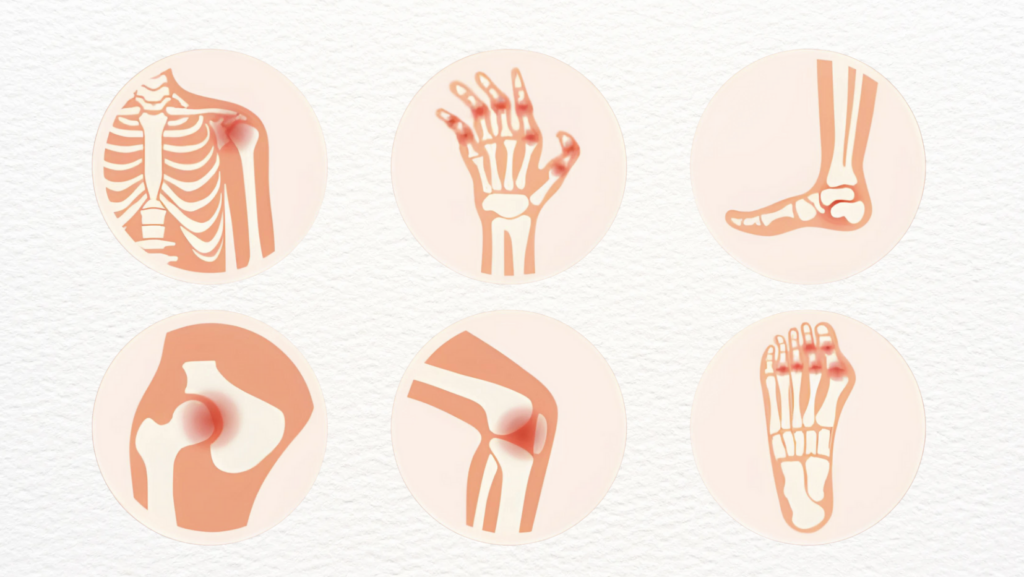Health Conditions, Joint Health
What Are The Types of Rheumatoid Arthritis?
Rheumatoid arthritis (RA) is one of the most common autoimmune illnesses, defined by chronic inflammation and joint destruction.
Despite its widespread awareness, RA is not a single disorder, but rather a group of presentations and subtypes, each with its own clinical characteristics, disease history, and prognosis. Understanding the various types of rheumatoid arthritis (RA) is critical for developing successful treatment plans and improving patient outcomes.
This article digs into the diverse landscape of rheumatoid arthritis, examining its numerous types and subclasses, defining their distinguishing features, and shining light on the subtle nuances that underpin this complicated autoimmune condition. This detailed article will provide readers with essential insights into the various phenotypic presentations of RA, allowing them to better navigate the diagnostic and treatment obstacles associated with this damaging illness.

Introduction to Rheumatoid Arthritis
This debilitating ailment can affect persons of any age, but it most typically appears between the ages of 30 and 60. Rheumatoid Arthritis (RA) can have a substantial impact on quality of life, producing stiffness, edema, joint abnormalities, and in extreme cases, leading to disability. Despite its ubiquity, RA is a complex and sometimes misunderstood disorder. Readers who have a thorough understanding of RA will obtain helpful ideas about handling its hurdles and maximizing their health outcomes.
If you’ve recently been diagnosed with rheumatoid arthritis (RA), you may be wondering what the future holds. The answer may depend on which of the two major categories you have.

Understanding Seropositive Rheumatoid Arthritis
A seropositive RA diagnosis is based on the presence of particular antibodies in blood tests, specifically anti-cyclic citrullinated peptide (anti-CCP) and rheumatoid factor (RF). These antibodies target healthy cells, causing inflammatory responses in the joints. While not all RA patients have seropositivity, the presence of anti-CCP and/or RF antibodies helps confirm the diagnosis and forecast disease progression.
Common Symptoms of Seropositive RA
Seropositive RA causes symptoms to persist throughout life, with phases of exacerbation and remission. Joint involvement is a defining trait, with numerous joints commonly afflicted. Furthermore, the presentation is typically symmetrical, affecting comparable joints on both sides of the body.
- joint swelling
- pain
- stiffness for over an hour in the morning, if not all day
- fatigue
- fever
- low appetite
These symptoms can severely limit mobility and quality of life.
Compared to seronegative RA, seropositive RA is often regarded as more advanced and severe. This classification is attributed to various factors, including increased joint damage, deformities, and the development of rheumatoid nodules.
Moreover, seropositive RA is associated with a higher risk of complications such as vasculitis, lung involvement, and extra-articular manifestations, which extend beyond the joints and affect other organs and systems in the body.

Management Strategies for Seropositive RA
Effective care of seropositive rheumatoid arthritis (RA) necessitates a multimodal approach that addresses all components of the disease in order to improve patient well-being and functional abilities. This comprehensive treatment includes pharmaceutical therapies, physical and occupational therapy, and lifestyle changes customized to the specific needs of each patient.
Pharmacological interventions:
Disease-Modifying Anti-Rheumatic Drugs (DMARDs): DMARDs are considered the foundation of RA treatment since they address the underlying autoimmune mechanism, slowing disease development and preventing joint destruction. Traditional DMARDs including methotrexate, sulfasalazine, and hydroxychloroquine are frequently administered first. Biologic DMARDs, which include tumor necrosis factor (TNF) inhibitors, interleukin-6 (IL-6) inhibitors, and B-cell inhibitors, are reserved for patients who do not respond well to standard therapy.
Nonsteroidal Anti-Inflammatory Drugs (NSAIDs): NSAIDs are used to treat the pain and inflammation caused by RA, providing symptomatic relief. NSAIDs do not change the course of the disease, but they can improve general comfort and mobility.
Corticosteroids: During disease flares, corticosteroids may be required for short-term suppression of inflammation and symptom management. However, long-term use is connected with serious adverse effects and should be avoided wherever feasible.
Biological Agents
Biologic medicines, also known as biologic response modifiers, target immune system components that contribute to RA development. These drugs are usually reserved for individuals with moderate to severe illness who haven’t responded well to traditional DMARD treatment. TNF inhibitors, IL-6 inhibitors, T-cell co-stimulation blockers, and B-cell-depleting drugs are some of the biological treatments that can be given as subcutaneous injections or intravenous infusions.
Therapy
Physical therapy is essential for managing seropositive RA since it focuses on improving joint mobility, muscular strength, and general functional ability. Therapeutic exercises, range-of-motion activities, and stretching routines can help reduce stiffness, increase joint flexibility, and maintain proper joint function. Physical therapists may also teach patients about joint protection techniques and how to use assistive devices to improve their independence in daily tasks.
Occupational therapy attempts to improve patients’ capacity to participate in meaningful activities and preserve independence despite the limitations caused by RA. Occupational therapists work with patients to create personalized methods and adaptations based on their unique requirements and goals. This could involve ergonomic examinations, adaptive equipment recommendations, and energy conservation measures to reduce joint strain and increase efficiency in daily chores.
Lifestyle Modifications
Lifestyle changes, such as dietary changes, weight control, and stress-reduction measures, can be used in conjunction with pharmacological and therapeutic approaches to manage RA. A healthy diet rich in anti-inflammatory foods like fruits, vegetables, whole grains, and omega-3 fatty acids can help reduce symptoms and enhance overall well-being.
Furthermore, keeping a healthy weight helps minimize joint stress and increase mobility, while stress management approaches such as relaxation exercises, mindfulness practices, and stress-reduction activities can help lessen the influence of psychological stressors on disease progression.

Exploring Seronegative Rheumatoid Arthritis
Seronegative RA, which lacks anti-cyclic citrullinated peptide (anti-CCP) and rheumatoid factor (RF) antibodies, makes up a lesser proportion of RA cases than seropositive RA.
Early studies in the early 2000s estimated the prevalence of seronegative RA at 12 per 100,000 RA patients, while additional research found a little increase to 20 per 100,000 in later years. While seronegative RA is less prevalent, its presence emphasizes the necessity of detecting and understanding this subtype in order to guarantee a correct diagnosis and effective treatment.
Common Symptoms of Seronegative RA
Because blood tests do not tell the whole story, your doctor will want to know if you are experiencing the following critical symptoms:
- Inflammatory joint discomfort
- Morning stiffness lasting more than an hour in your hands, knees, elbows, hips, feet, or ankles
- RA can cause joint swelling, soreness, discomfort, and redness in the distal joints (usually symmetrical)
- Symptoms that manifest symmetrically throughout the body and in many joints
- Fatigue
Management Strategies for Seronegative RA
Seronegative RA treatment is similar to seropositive RA treatment, according to trustworthy sources.
It will concentrate on reducing the progression of the disease, preventing joint damage, and alleviating symptoms.
Lowering overall inflammation and disease activity can also lower the likelihood of future problems like cardiovascular disease.
Treating The Symptoms
Nonsteroidal anti-inflammatory medications (NSAIDs) and steroids are two choices for treating RA symptoms in both seronegative and seropositive patients
NSAIDs can help relieve discomfort and edema during flare-ups. They do not, however, change the condition’s course.
Steroids can assist in reducing inflammation during flare-ups or when severe symptoms impact a single joint. However, steroids can have negative side effects and are not recommended for long-term use.
Slowing The Progress
Disease-modifying anti-rheumatic Drugs (DMARDs) are important in the treatment of seronegative rheumatoid arthritis (RA) because they decrease disease development by modifying the dysregulated immune response that causes the disorder. DMARDs include a wide range of drugs that work by modifying immune system activity, preventing joint injury and preserving overall joint health.
Methotrexate, also known as Rheumatrex, is one of the most commonly used DMARDs for the treatment of seronegative RA. Methotrexate works by suppressing the action of dihydrofolate reductase, an important enzyme involved in DNA synthesis.
Methotrexate inhibits the multiplication of immune cells that cause inflammation in seronegative RA by interfering with folate metabolism. Furthermore, methotrexate has immunomodulatory effects, which reduce the generation of pro-inflammatory cytokines and attenuate the autoimmune response that causes joint deterioration.
In addition to standard DMARDs such as methotrexate, targeted treatments have emerged as a viable option for the treatment of seronegative RA.
Tofacitinib, marketed under the brand name Xeljanz, belongs to a new class of DMARDs called Janus kinase (JAK) inhibitors.
Unlike typical DMARDs, which have wide immunosuppressive effects, tofacitinib targets Janus kinases, intracellular signaling proteins that play a critical role in immune cell activation. Tofacitinib disrupts signaling pathways involved in the pathophysiology of RA by selectively inhibiting JAK enzymes, reducing inflammation, and preventing joint destruction in seronegative cases.

Diet
In the treatment of seronegative rheumatoid arthritis (RA), an anti-inflammatory diet based on plant-based foods has gained popularity as a supplement to conventional therapy. This dietary regimen is intended to minimize inflammation, alleviate symptoms, and increase overall joint health in people with seronegative RA.
Plant-based diets, which include an abundance of fruits, vegetables, whole grains, legumes, nuts, and seeds, are high in antioxidants, phytonutrients, and fiber, all of which have powerful anti-inflammatory qualities. Individuals with seronegative RA may benefit from including a varied range of plant-derived foods in their diets in order to reduce inflammation and optimize immunological function.
One of the major principles of an anti-inflammatory diet is to focus on whole, unprocessed foods while avoiding pro-inflammatory dietary triggers such as refined sweets, trans fats, and processed meats. Individuals with seronegative RA can improve immunological function, minimize oxidative stress, and modify inflammatory pathways involved in RA pathogenesis by selecting nutrient-dense plant diets.
Furthermore, plant-based diets provide other health benefits other than inflammation reduction, such as weight control, cardiovascular health, and gastrointestinal well-being. Maintaining a healthy body weight is especially important for those with seronegative RA since excess weight can worsen joint tension and inflammation, resulting in increased disease activity and disability.
Individuals who follow a plant-based diet high in fiber and low in saturated fats can help with weight loss and improve metabolic health, potentially lowering the impact of seronegative RA on their joints and general well-being.
While an anti-inflammatory diet oriented on plant-based foods shows potential as a therapeutic adjuvant in the treatment of seronegative RA, dietary changes must be approached with caution and individualization.
A certified dietician or healthcare specialist can assist individuals in tailoring their dietary choices to meet their personal nutritional needs, preferences, and medical conditions. Furthermore, it is critical to understand that dietary therapies should supplement, not replace, traditional treatments for seronegative RA, such as medication and physical therapy.
Similarities and Differences of Seropositive and Seronegative RA
Understanding the differences between seropositive and seronegative rheumatoid arthritis (RA) is critical for doctors and patients navigating the complexity of this chronic inflammatory disorder. Although both subtypes share essential characteristics, such as joint inflammation and injury, they differ in critical ways that influence disease progression, prognosis, and therapy approaches.
By identifying the similarities and differences between seropositive and seronegative RA, healthcare practitioners and patients with RA can better customize therapies, improving outcomes and quality of life.
Similarities
Regardless of the diagnosis, your symptoms are likely to remain the same. These may include:
- Joint pain
- Joint stiffness
- Morning stiffness lasting at least 30 minutes.
- Inflammation of the body in locations other than joints.
- Fatigue
Differences
People with seropositive RA experience higher pain than those with seronegative RA. They are more likely to:
- Have nodules (swollen lumps beneath the skin)
- Have vasculitis (inflammation of blood vessels)
- Have rheumatoid lung issues.
- They have other conditions in addition to their RA, such as cardiovascular disease. Smokers are more likely to develop seropositive RA.

Juvenile Rheumatoid Arthritis
Juvenile idiopathic arthritis (JIA) is a kind of arthritis in children. Arthritis causes joint swelling and stiffness. JIA is a type of arthritis that affects one or more joints for at least 6 weeks in children aged 16 and under.
Unlike adult rheumatoid arthritis, which is chronic and lifelong, juvenile idiopathic arthritis (JIA) frequently resolves. However, the illness can impair bone formation in a developing youngster.
Types of Juvenile Idiopathic Arthritis
Systemic onset JIA
This type targets one or more joints. A high fever and skin rash are frequently present. It can also induce inflammation in internal organs like the heart, liver, spleen, and lymph nodes. This is the least common type. It affects between one in ten and one in seven children with JIA.
Oligoarticular JIA
This type affects one to four joints throughout the first six months of the disease. If no more joints are afflicted after 6 months, this variety is known as persistent. If more joints are afflicted after 6 months, the condition is called extended.
Polyarticular JIA
This form affects five or more joints within the first six months of sickness. Blood tests for rheumatoid factor (RF) will determine whether this kind is RF-positive or RF-negative.
Enthesitis-related JIA
A youngster of this type suffers from both arthritis and enthesitis. This is a swelling of the tissue where the bone joins the tendon or ligament. It usually affects the hips, knees, and feet.
Psoriatic arthritis
A child with this condition may have arthritis as well as psoriasis, a red, scaly skin disease. A child may have arthritis and two or more of the following.
- Inflammation of the finger or toe
- Pits or ridges in fingernails
- A first-degree relative has psoriasis
Undifferentiated arthritis – This is arthritis with symptoms from two or more of the JIA kinds listed above. Alternatively, the symptoms may not match any kind of JIA.
Symptoms of Juvenile Idiopathic Arthritis
Symptoms may occur during episodes (flare-ups). Or they could be continuing (chronic). Symptoms differ from child to child. Symptoms could include:
Swollen, stiff, and painful joints in the knees, hands, feet, ankles, shoulders, elbows, or other joints, especially in the morning or after a nap.
- Eye inflammation.
- Warmth and redness in the joint
- Limited capacity to use one or more joints.
- Fatigue
- Low appetite, poor weight gain, and delayed growth
- High fever and rash in systemic JIA
- Swollen lymph nodes (systemic JIA)
These symptoms may resemble those of other medical problems. Make sure your child visits his or her doctor for a diagnosis.

Management Strategies for Juvenile Rheumatoid Arthritis
The primary goal of juvenile idiopathic arthritis (JIA) treatment is to reduce pain and stiffness while instilling a sense of normalcy and independence in affected children. Recognizing that JIA can have a substantial impact on many elements of a child’s life, including physical function, mental well-being, and social relationships, treatment aims to reduce symptoms while improving overall quality of life.
Tailoring treatment techniques for JIA requires a diverse strategy that takes into account each child’s individual requirements and circumstances. Specific symptoms, the child’s age, overall health status, and the severity of the ailment are all important considerations when making therapy decisions.
Treatment may include medicines such as:
- Nonsteroidal anti-inflammatory drugs (NSAIDs), to relieve pain and inflammation.
- DMARDs, including methotrexate, can reduce inflammation and regulate JIA.
- Corticosteroid medications can lessen inflammation and severe symptoms.
- Biologic medicines are those that interfere with the body’s inflammatory response. They are used when other treatments are not effective.
Consult your child’s healthcare professional about the risks, benefits, and potential side effects of all medications.
Other therapies and lifestyle changes could include:
- Physical therapy can help improve and maintain muscle and joint function.
- Occupational therapy, to increase the capacity to execute daily activities.
- Nutritional counseling.
- Regular eye exams to detect early eye abnormalities due to inflammation
- Regular exercise and weight management
- Getting adequate rest
- Learning to move or carry objects using large joints rather than small joints.
Help your child manage his or her symptoms by adhering to the treatment plan. This includes getting adequate sleep. Encourage exercise and physical treatment while finding ways to make it enjoyable. Work with your child’s school to ensure that he or she receives any assistance that is required. Collaborate with other caregivers to ensure your child participates as much as possible in educational, social, and physical activities.
Finally, the purpose of JIA treatment is to encourage children to thrive in the face of the condition’s challenges, allowing them to live happy lives and pursue their dreams with confidence and perseverance. Healthcare providers can help children with JIA achieve optimal results and embrace a better future by using a comprehensive strategy that addresses the physical, emotional, and social elements of the condition.
Disclaimer: Please note that Discoverybody has taken great care to ensure that all information provided is comprehensive and up to date. However, you should not use this article as a substitute for the expertise that a licensed healthcare professional can offer. It’s always a good idea to talk to your doctor before taking any medication.
Sources Expanded
- Charleson, K. (2023, September 28). Types of Rheumatoid Arthritis. Verywell Health. https://www.verywellhealth.com/types-of-rheumatoid-arthritis-5093089
- Whitbourne, K. (2017, September 13). What Type of RA Do You Have? WebMD. https://www.webmd.com/rheumatoid-arthritis/rheumatoid-arthritis-types
- Cooper, J. (2020, October 2). When You’re Seronegative for RA. WebMD. https://www.webmd.com/rheumatoid-arthritis/seronegative-for-rheumatoid-arthritis
- Boyle, E. L. (2023, September 11). What Is Seropositive Rheumatoid Arthritis? https://www.healthcentral.com/condition/rheumatoid-arthritis/seropositive-rheumatoid-arthritis
- Railton, D. (2024, January 23). What is seronegative rheumatoid arthritis? https://www.medicalnewstoday.com/articles/315580#natural-remedies
- Best Foods for Rheumatoid Arthritis | Arthritis Foundation. (n.d.). https://www.arthritis.org/health-wellness/treatment/treatment-plan/tracking-your-health/foods-that-can-help-ra-symptoms
- Information for Juvenile Arthritis Patients & Families | Arthritis Foundation. (n.d.). https://www.arthritis.org/juvenile-arthritis-patient-education
- Garrard, C. (2023, August 11). Seronegative Rheumatoid Arthritis: What to Know. EverydayHealth.com. https://www.everydayhealth.com/rheumatoid-arthritis/basics/facts-about-seronegative-rheumatoid-arthritis/
- Juvenile Rheumatoid Arthritis. (2021, April 5). Johns Hopkins Medicine. https://www.hopkinsmedicine.org/health/conditions-and-diseases/arthritis/juvenile-idiopathic-arthritis
- Juvenile idiopathic arthritis – Symptoms and causes – Mayo Clinic. (2022, October 5). Mayo Clinic. https://www.mayoclinic.org/diseases-conditions/juvenile-idiopathic-arthritis/symptoms-causes/syc-20374082
Trusted Health, Wellness, and Medical advice for your well-being



